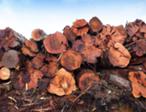The provincial government’s attempt to conserve a healthy fishing habitat in northern B.C. is creating a flap from local businesses and foreign fish enthusiasts worthy of the feistiest steelhead.
The Angling Management Plan - Skeena Quality Waters Strategy has been on the table for discussion this fall, with the deadline for feedback ending earlier this week.
Within it, a proposed lottery system that would cap the number of non-resident anglers fishing the Skeena watershed is drawing serious criticism from the local business community and out-of-country anglers.
The draft plan was developed in the spring and early summer by local anglers, fishing guides and Ministry of Environment representatives. It was designed to respond to a recent influx of foreign anglers on northern B.C.'s world-class steelhead fishing rivers.
According to Ministry of Environment statistics, overall angler numbers varied on rivers throughout the Skeena watershed between 1983 and 2005, with the most notable increases taking place on the Kispiox and Zymoetz rivers.
On the Kispiox, the number of foreign anglers surpassed locals in the late 1980s and currently about twice as many non-Canadians fish the river as B.C. residents. Canadians from outside B.C. make up the smallest portion of anglers in the area.
Alan Dolan, who facilitated discussions for the draft plan, said 61 per cent of local anglers surveyed responded that they agreed or strongly agreed that crowding was becoming a problem in the Skeena watershed.
“There has been concern for a long time that the quality of angling on the river is going downhill,” Dolan said. “The quality angling experience means a quality tourist experience from people who are coming from outside.”
With tributaries like the Kispiox, Bulkley, Babine and Morice rivers made world famous by their steelhead stocks, the Skeena watershed has long attracted international attention from the fishing community, with the likes of late-night talk show host David Letterman and outgoing American VP Dick Cheney rumoured to cast a line in its waters.
In an effort to protect stocks, the area has classified waters status, with only catch-and-release fishing with barbless hooks permitted. Steelhead returns have seen a gradual decrease in recent years, but appeared to rebound slightly in 2008.
The angling management plan is not about steelhead conservation, Dolan points out, but about conserving the angling experience for locals and visitors. Although “quality angling experience” is subjective, its definition amounts to preserving the wilderness experience and, of course, landing the big one.
While the lottery system is designed to cap the number of non-resident anglers coming to the area, local businesses have expressed concern with the inflexibility of the proposed changes, which would mean non-residents would have to apply to the lottery system—and choose the rivers they will fish—well in advance of their arrival.
Fishing bloggers, mostly south of the border, have been busy decrying the proposed changes in the wake of the draft plan’s release, many threatening not to visit the area if suggested measures are implemented.
With a declining forest industry and shaky economy, businesses such as restaurants, hotels and tackle shops in the North argue that discouraging the foreign fishing market might not be prudent, considering the province’s current economic climate.
Dolan said he received 445 replies to an online form and 350 e-mails, with most e-mails coming from non-residents. A report on the feedback will be available late January or early February, with working groups returning to the table between February and April and a revised plan forwarded to the Director of Fish and Wildlife for review next summer.
Dolan said the working group will have to address concerns of the local business community and added that any changes are likely to be implemented with the 2010 or 2011 fishing regulations.
“We walk a fine line between resident anglers and a guiding industry and a local economy that relies primarily on non-guided, non-resident anglers,” Dolan said.
“It’s a unique wilderness steelhead fishing experience. There are a lot of people now saying they won’t come again, but I don’t think this area will have trouble attracting people to come fish in these rivers.”










What have we missed? What do you think? We want to know. Comment below. Keep in mind:
Do:
Do not: